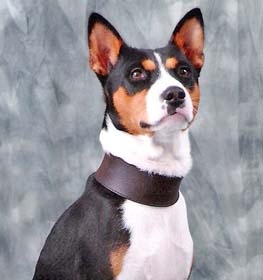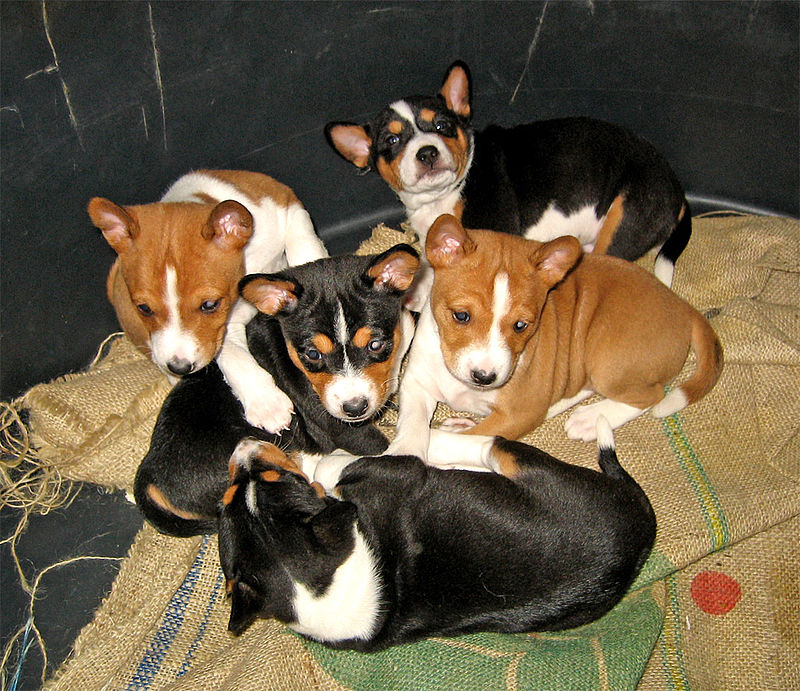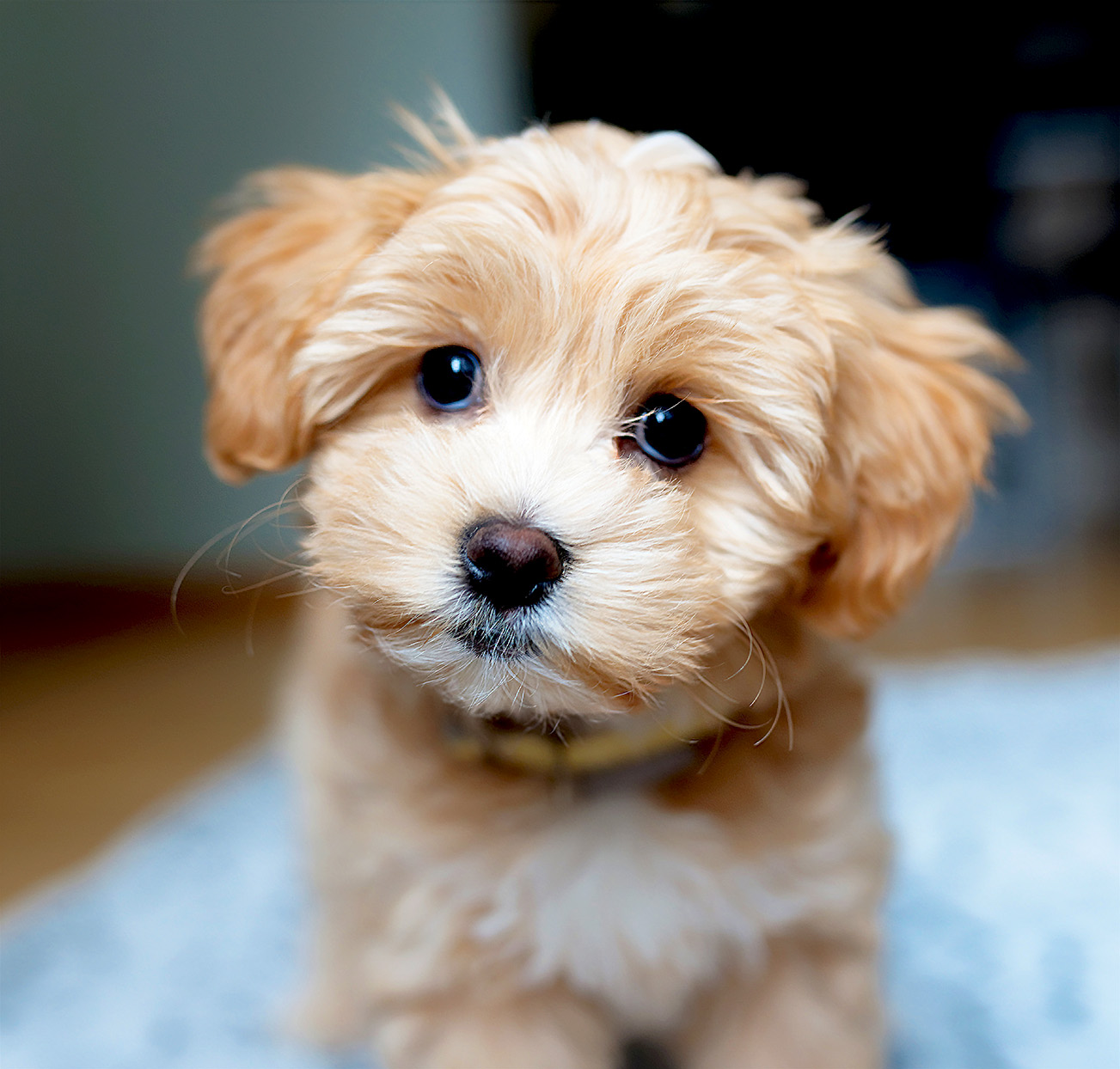Last Updated on August 29, 2021 by Fumipets
Basenjis are one of the oldest American Kennel Club (AKC) breeds, having originated in Africa. Basenjis, who were already a well-established breed at the time, were often given as presents to pharaohs, according to ancient Egyptian artefacts.
Basenjis were valued for their adaptable hunting abilities, excellent eyesight and hearing, and the ability to quietly jump vertically into the air to locate animals in their native grasslands.
Indeed, one African name for the breed roughly translates to “dog that jumps up and down.”
Basenjis are mostly maintained for breeding and exhibiting reasons, as well as companion animals. They are known for their elegant speed, big, erect ears, curled tails, and silky, smooth coats.
Basenji dogs come in a variety of colours. Red and white, black and white, multicoloured, and brindle and white are the most common Basenji colours. Other colours, such as cream and white or blue tricolour, are feasible and frequent among African Basenjis but are still uncommon in the United States.
Regardless of breed, the topic of coat colour may be very difficult.
We’ll try to make things easy, as we take you through the basic Basenji colours and explain why most of the lovely, natural, alternate colours have all but disappeared in today’s domesticated Basenjis.

Standard Basenji Colors
Although there are no colour disqualifications in the AKC breed standards, the four most frequent colours, red, black, tricolour, and brindle, are considered standard.
Alternative-coloured dogs, on the other hand, may be registered, bred, and exhibited, but they may get a colour fault in the show ring, depending on the judge.
Red And White

When people think of a Basenji, the colour combination red and white typically comes to mind. Numerous Basenjis have this lovely colouring, and there are many variations within this coat colour.
Although many individuals unfamiliar with the breed might describe the red as orange, beige, or dark tan, it is characterised as a deep chestnut red, rich and vivid in saturation.
The colour regions should be clearly defined and not “bleed” into the white at all, as with all Basenji colours. The presence of stray coloured hairs in the white part of the coat is undesired. The white should be bright and pure.
When two pure-for-red dogs are mated, the pups will be pure-for-red as well, since they do not contain any other hidden colour genes and are homozygous for the trait.
Black And White

The white should be bright and well defined on Basenjis with black and white colouring, while the black should be a glossy, deep, dark, pure black.
Because black is a dominating colour, black and white pups are conceivable if one of the parents is black and white. If a black and white Basenji is mated to another black and white Basenji, all of the pups will be black and white, but they may be carriers of another colour if one of the parents is.
White, Tan, And Black (Tri-Color)

This unusual colour combination looks great on a Basenji. The typical white spots remain, but the remainder of the coat is a stunning deep black with extra chestnut red colouring on the eyebrows, cheeks, inner part of the upper legs, base of the ears, and inner ear.
You can get a better sense of what tri-coloured Basenjis look like if you imagine the colour pattern of a Rottweiler and then add the white Basenji markings. Basenji fans often refer to black, white, and tans as simply “tris.”
Because the tri-colouration is a recessive trait, breeding two tri-coloured Basenjis will always result in a litter of tris, even though two tri-factored dogs (meaning they carry but do not exhibit the tri-colouration) may produce a litter of black, red, brindle, tri, or trindle puppies.
Brindle And White

Brindle and white Basenjis have the typical white markings, but instead of solid red markings, they have clearly defined black stripes on a chestnut red backdrop.
When you breed two brindles or a brindle to a tri, you’ll get both brindle and red and white puppies. If two tri-factored brindles are mated, the litter is likely to include reds, brindles, tris, and trindles.
Alternative Colors
With the exception of trindles, which are found often on purebred Basenjis, the conventional colours are unquestionably the most prevalent. Other colours are absolutely fine, although they are seldom seen nowadays.
Basenjis in Africa are often seen in various alternate colours, and some of these dogs are slowly being brought to the United States in the hopes of resurrecting these naturally occurring colours in American stock.
The Basenji Club of America currently only specifies the standard colours for Basenjis, although the American Kennel Club (AKC) does mention the following colours as acceptable. Many members of both organisations want to see these unusual colours become more prevalent in the breed.
Black, Brindle, And White Or Trindle
A black, brindle and white Basenji is a tri-coloured dog with brindle markings instead of red and is often known as a trindle or a brindle-pointed tri, but dogs with this pattern would be classified as tricolour for AKC showings.
Despite the fact that some breeders dislike this colouring, a trindle recently won best-in-show at an all-breed dog show, according to the Basenji Club of America.
Breeders that like this pattern often cross a trindle with a tri, a tri-factored red, a black, or a tri-factored black to create litters that include all of the normal colours with a few trindles thrown in for good measure.

Cream And White
Cream and white Basenjis have a light cream to pale yellow colouring in place of the chestnut red colouration.
Cream and white was a popular colour pattern in the first imported Basenjis, but breeders disliked the colour, as well as the light nose leather and greenish eyes that came with it, and selectively bred to remove the colour, which they almost succeeded in doing.
Blue, Cream, And White
In addition to the usual white patches, Basenjis with this colour pattern have a diluted black (called blue) blanket colour with cream accents. These tri-coloured dogs with the cream gene sprang from tri-coloured Basenjis with the cream gene, and they, too, started to fade as early breeders tried to eliminate the cream colour.

Mahogany And White
Due to the scattering of black hair among the red part, mahogany and white Basenjis are considerably deeper in colour than normal red and white canines. This colour pattern is so uncommon that just a few photographs of it exist, and those that do are all in black and white.
Sable And White
Sable and white Basenjis feature the traditional red and white pattern, but the red hairs are tipped with black, giving the dog a completely new appearance. This colouring is known as sesame in Shiba Inus.

Basenji Markings
Brindle markings are permitted by the AKC, a black face mask, black saddle over the rib cage, and capped markings are also permitted, although they are not frequently seen.
Are Different Colours Priced Differently?
Because there are no colour restrictions, most reputable Basenji breeders focus on temperament, health, and conformation rather than colour. Some breeders may charge more for dogs with brindle markings than for dogs with red or black markings, but the majority do not.
In fact, producing and raising a highly sought coloured puppy costs the same as producing and raising a puppy with a conventional hue. Breeders understand this, but prospective purchasers may not, and would happily pay more for a brindle than they would for a red.
However, it should be noted that some of the alternative colours are undefined by breed standards and have been nearly eradicated from the gene pool in the United States due to early breeders’ preferences. These extremely rare colours should command a much higher price.


















